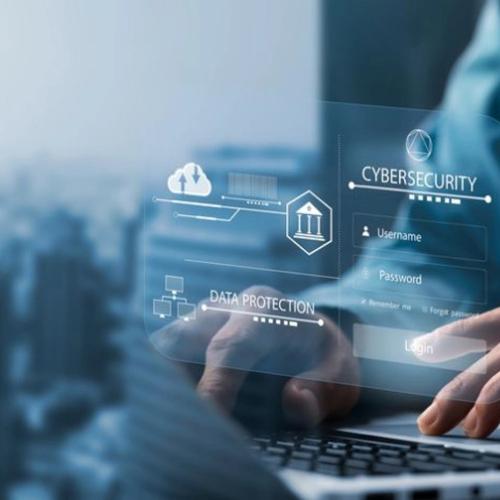Tech and Business Trends: Looking Ahead to 2030
Insights into key trends shifting the way we work over the next 10 years

After 2020 has left its mark on the professional world, we can't help but wonder what the next 10 years will bring. While we’ve endured challenges, we’ve also seen some groundbreaking innovations – expedited either due to disruption or due to years of progress – that are finally beginning to pave the way for technological advances and breakthroughs that once seemed distant. From the gig economy to AI, hear from Georgia Tech experts about the changes and emerging trends that will develop across all industries over the next decade.
Trend #1 - Transparency
As the era of digitization expands, data is becoming more prevalent and available. With this, comes the demand for transparency. Now more than ever, organizations of all fields are being held accountable to high standards of practice by both the public eye and the government hand. And, as data becomes more accessible throughout the next decade, this trend will continue to increase.
Greater Accountability
Today, this trend is most obvious in the supply chain industry, with the concept of the transparent supply chain: the degree to which an organization knows and shares detailed information about its supply chain within the organization as well as with the public. Over the past 15 years, supply chain transparency has become increasingly necessary for organizations to establish or maintain their reputations. In the next 10 years, it will become imperative.
Facing pressure from governments, NGOs, consumers, and stakeholders, organizations must continually meet public expectations and government regulations regarding their supply chain, or risk business failure. Food companies, for example, must show that they meet certain standards regarding ingredients, animal welfare, and child labor. Failure to share this information can cost the company its consumer base or disrupt its supply chain altogether.
Daphne de Poot, senior data scientist at ORTEC, fully expects supply chain transparency to become the new normal in the next 10 years. “There has been an upward trend on supply chain traceability and visibility,” she says. “This trend will grow stronger as more data becomes available, climate change becomes an even larger driving force, and organizations become more purpose-driven.”
Safety Policies
Paul Schlumper, director of Safety, Health and Environmental Services, expects that in the coming decade, there will also be a greater push for transparency and standardization across safety and health regulation, including increased inspections and enforcement across the nation. Under pressure from COVID-19, the Occupational Health and Safety Administration (OSHA) has worked collaboratively with the Centers for Disease Control and Prevention (CDC) to present guidance on how to protect workers during this difficult and dynamic period.
Even with the increase in inspections, the ability to do them virtually has allowed OSHA to be more capable of protecting worker safety and health than before. This flexibility provides more opportunities to safeguard the safety and health of working professionals.
Trend #2 - Connectivity
With every breakthrough in technology, from the wheel to the automobile to the cell phone, the world has become more interconnected. Throughout this next decade, this trend of connectivity will continue to develop, providing greater access to additional markets for growth and stability, bigger talent pools, and a more rapid spread of innovation and ideas.
Global Exchange
While Covid-19 sent global connectedness into a rapid decline at the beginning of 2020, the world has already begun to rebound and will continue to do so. By August, international trade in goods had recovered more than 75% of its drop, standing just 3-4% below its pre-pandemic level. Additionally, the globalization of information flows accelerated as the pandemic forced work, education, and recreation online. International internet traffic rose by 48% from mid-2019 to mid-2020, and international telephone call minutes climbed 20% in March 2020 versus the year before.
In fact, stronger global connections will most likely accelerate the world’s recovery from the effects of Covid-19, as countries that connect more to international flows tend to enjoy faster economic growth.
According to Tim Brown, managing director of the Supply Chain and Logistics Institute at Georgia Tech, the increased transparency complemented by the increase in connectedness will also bring flexibility, where some areas like transportation, warehousing, and contract manufacturing players will become more interchangeable.
Gig Economy
Another effect of global connectedness is the rise of the gig economy, a free-market system in which organizations hire independent workers for short-term, temporary commitments. Such independent workers are often known as “contractors.” Due to the increased digitization of work, workers may look for job openings in a wider variety of locations, and companies, selecting from a bigger pool of applicants, are more likely to find workers interested in temporary positions.
The benefits of the gig economy include a more flexible work-life balance for workers and less investment for companies, such as in training, salary, and office space. However, the gig economy also presents a challenge for safety and health, and potentially leaves an ever-expanding pool of workers vulnerable and lacking in other traditional employment benefits, including retirement funding and health insurance. To combat this, "a push for new regulations to support these worker populations may be on the horizon," says Hilarie Warren, director of the Georgia Tech OSHA Training Institute Education Center.
Digital Safety
While this global connectivity opens the door to farther-reaching opportunities, it also poses greater risks. As the professional network enlarges, the events that happen within it will yield greater consequences, and organizations will be more susceptible to events that happen farther away.
As a result, organizations will need to become more adaptable as connectivity increases, anticipating potential challenges and creating solutions in advance.
One area that poses a security risk for organizations is the digital realm. As technology advances, so does the cyber-attacker. And, as the world becomes more connected, cyber-attacks will be able to inflict wider damage. Raheem Beyah, dean of Georgia Tech's College of Engineering and executive director of the Institute's Online Master of Science in Cybersecurity, predicts that the next 10 years could bring increasingly unique and invasive attacks.
These attacks could target the integrity of cyber-physical systems as well as additive manufacturing systems, which are processes that assemble parts to produce a whole, such as 3D printing. Attacks could range from immobilizing cars or programming them to behave erratically, to designing a printed object to change shape while in use, such as a plane propeller in mid-flight.
Trend #3 - Automation
In the next decade, nearly every industry will experience a rapid surge in machine operations, including automation, artificial intelligence (AI), and machine learning. This trend toward machine dependence has many people worried that they will lose their jobs to machines. However, while machines take over some human operations, they will create new jobs in the process. Researchers estimate that 85% of the jobs that will exist in 2030 have not been invented yet. The key to navigating the growing interdependence of humans and machines in the workplace is maintaining both technical skills and human skills.
In fact, as machines become more established members of the workforce, uniquely human skills, such as flexibility, mental agility, ethics, resilience, systems thinking, communication, and critical thinking, will become even more valuable.
AI & Machine Learning
The Supply Chain industry is one of many fields that will witness a proliferation of AI and automation in its operations. Brown predicts that machine learning and artificial intelligence will play a much greater role over the next ten years. These tools will support strategic, tactical, and operational planning, leading to more dynamic coordination and execution of supply chain and logistics processes.
Brown also predicts that Supply Chain will witness an automation make-over. There will be a massive increase in the use of robotics and autonomous vehicles of all functions, from moving supplies within facilities to transporting physical goods across the supply chain.
Human Skills
While machines may be able to take over mundane, repetitive, or predictive practices, they will never be able to replace the creativity, emotional intelligence, and adaptability of the human mind, and these human capabilities will be in high demand as technology progresses. There will always be a need to understand, use, maintain, and develop new and emerging technologies. And, as these technologies filter into every industry, there will be demand for “change leaders” to guide organizations through the implementation.
Chris Carter, director of the project management program at Georgia Tech, believes this leadership skill is the most pressing requirement for the project manager in the coming decade. “Even with technical skills firmly established,” Carter explains, “if a project manager cannot lead a team well or effectively collaborate with organizational stakeholders, they will ultimately not be as successful on their respective projects as others who have such people leadership skills.”
This shift is evident in the latest version of the PMP exam—42% of its content now focuses on people/leadership skills, as opposed to 20% previously. As a result, educational institutions will be expected to anticipate these changes and adapt their programs to prepare graduates for this new organizational environment, teaching topics such as emotional intelligence, stakeholder influence, negotiations, developing and building teams, and mentoring.
In response to this trend, Carter and the project management team have added a new course to GTPE’s project management certificate: Leadership in Project Management.
Looking Ahead
As we look ahead to 2030, Kathryn Walter, GTPE instructor, predicts that many of these future developments will increase resiliency across industries. “Technological improvements such as gains in machine learning have facilitated increasingly better predictions of uncertainty since about 2000, and we expect this upward trend to continue,” she remarks. While we will certainly have to embrace many new changes in the next ten years, these changes will create new growth opportunities and strengthen the professional workplace, creating a brighter future of work.
Editor: Shannon Helton-Amos
Digital Producer: Kelsey Harris

